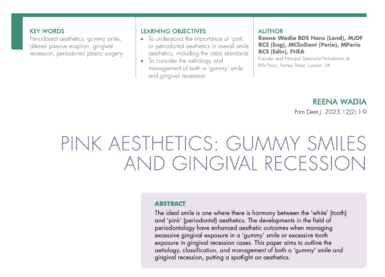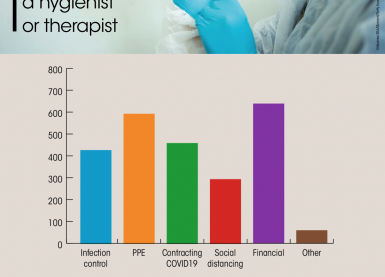January 19, 2015

Facial aesthetics and the Dental surgeon:
- The importance of a smile can never be underestimated.
- As a dentist you are inherently involved in facial aesthetics by default.
- in particular the peri-oral region from a 3d perspective.
Understanding anatomy:
- The anatomy of the head and neck (including the muscles, nerves and arteries) is crucial to understand for all aspects of facial aesthetics and functional treatment.
- If you understand the dynamics of this anatomy then you can influence favourable change.
- It is also important not to forget that muscles have a synergistic mode of activity. Muscles are either elevators or depressors which work in an antagonistic fashion.This tug of war concept has been described in the literature: Khanna B. The use of botulinum toxin in facial rejuvenation – ADT 2003; 1(2): 50-56.
Applications of Botulinum toxin (BTX):
- Examples include brow shaping, eye opening in the upper facial region.
- BTX can also be used to treat ‘gummy smiles’. References: Rubin LR. The anatomy of the smile: its importance in the treatment of facial paralysis. Plast Reconstr Surg 1974; 54: 384-7; Khanna B. Lip stabilisation with Botulinum toxin. Aesthetic dentistry today May 2007 2998 Vol 1; 54.59. A ‘gummy smile’ usually has a musculature component to it, which can be treated. The other cause of a ‘gummy smile’ may be skeletal (vertical maxillary excess).
- Bruxism – Christiansen 2001. Bruxists often present with masseteric hypertrophy and tend to posture forwards. Posturing results in spasm in the upper neck area. Strategic BTX treatment is useful here to induce muscular atrophy but for a more long term resolution one must perform a comprehensive analysis for these cases and aim to find out the underlying aetiological factors. Treatment may also therefore include occlusal therapy with eg.a splint. In bruxists, masticatory load on teeth due to hypertrophy can be x100 more than normal. Indeed when inducing muscular hypotrophy it is important to reach the correct balance as the muscles still need to be viable for masticatory function.
- 3D dermal filler augmentation – dermal fillers can be used to add volume to certain parts of the face such as the nose,cheeks,tear troughs,lips, nasolabials,oral commisures,chin and jaw line.
Complications:
- If poor techniques are employed the treatment outcome with fillers and BTX can be less than optimum and often disastrous. Most complications are operator induced as opposed to the materials used.Over exuberant treatment with little respect to the underlining skeletal platform can result in a poor aesthetic outcome.
- It is possible to remove HA filler by using an enzyme ie. Hylase.
The importance of practical training:
- In order to be proficient in treating patients it is essential that, alongside comprehensive theoretical knowledge, one has extensive practical training in anatomically derived techniques.
The future:
In his clinics Prof BK has been using the very latest advances in PRP and thread lifting techniques:
- Plasma rich in growth factors (PRP) can enhance tissues and improve vascularity and chemotaxis as well as induce fibroblastic activity – neocollagenesis. Thereby enabling regeneration and improving the vitality of the skin.
- Thread lifting – resorbable threads (PDO) can be used to elevate the skin and SMAS and thereby initiate a face lifting effect. PDO also has a neo-collagenic effect too.
- Ultimately the aim should always be to try to promote natural aesthetics and as you all have seen in this short lecture, there is a lot you can do before using a scalpel!
The Dr Bob Khanna Training Institute has a modular teaching approach to facial aesthetics concentrating on all aspects of anatomically derived techniques in the use of BTX and dermal fillers,from beginner and intermediate to advanced levels. They are committed in the pursuit of ethical, safe and predictable outcomes so as to safeguard the patient and operator accordingly.



